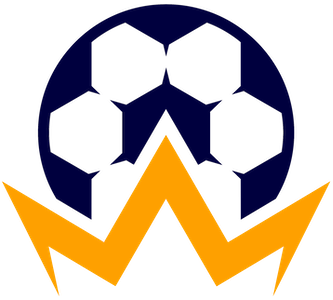Atlético Madrid is making calculated strides to reshape its squad, emphasizing a blend of youth, versatility, and strategic acquisitions to reassert its dominance in La Liga and European competitions. Under the guidance of Diego Simeone, the club appears to be pursuing a vision that balances reinforcing key positions with cultivating fresh talent. The recent signings — such as Matteo Ruggeri, Álex Baena, Thiago Almada, and Johnny Cardoso — signal a shift towards dynamic, adaptable players who can fit multiple roles on the pitch. This strategy aligns with Simeone’s pragmatic philosophy, emphasizing flexibility and resilience over superficial star power. By integrating players with diverse skill sets, Atlético aims to craft a cohesive team capable of adapting to varied tactical demands, signaling a long-term blueprint for competitive consistency.
The Renato Veiga Pursuit: A Calculated Risk or a Missed Opportunity?
One of Atlético’s most high-profile negotiations involves the potential transfer of Renato Veiga from Chelsea. This move underscores the club’s focus on youthful talent with significant potential. Veiga, just 21, embodies versatility, able to operate across defensive and midfield roles—an attribute highly valued by Simeone’s system. Atlético’s interest in Veiga highlights their desire to bolster the squad with adaptable players who can evolve within the team’s tactical setup.
However, the financial gap remains a substantial obstacle. Chelsea’s asking price of £40-45 million presents a steep challenge, especially for a player who has yet to fully establish himself at the senior level in England. The ongoing discussions aim to narrow this valuation gap, with sources indicating a good relationship exists between the clubs that could eventually facilitate a deal. Atlético’s ambition to acquire Veiga, despite the financial hurdles, illustrates a broader willingness to invest in potential rather than just proven pedigree—a philosophical stance aligned with their youth-centric approach.
Yet, this also raises questions about the club’s financial discipline and risk management. Investing heavily in an unproven talent requires confidence in the player’s development trajectory. While Veiga’s versatility adds value, Atlético must weigh the potential for immense growth against the risk of overpaying for a player still adjusting to the highest levels of European football. This illustrates a broader tactical philosophy: do not just buy established stars but nurture future ones.
De Paul’s Departure: Shifting Ambitions and Changing Dynamics
The recent agreement to transfer Rodrigo de Paul to Inter Miami for £15 million marks a significant shift in Atlético’s midfield architecture. The Argentine international’s departure is more than a financial transaction; it reflects a strategic recalibration. De Paul’s desire to work alongside Lionel Messi and fulfill personal aspirations underscores the human element behind these moves but also indicates Atlético’s readiness to part with key figures if their long-term plans are compromised.
De Paul’s exit also signals a wider reshuffling in Atlético’s squad, which could open space for emerging talents and allow the club to pursue new signings like Johnny Cardoso. It raises the question: is Atlético Madrid embracing a renewal phase to stay ahead of European rivals, or are they simply reacting to market pressures? The club’s willingness to offload a talented midfielder for a relatively modest fee suggests a focus on either developing youth or reallocating resources—potentially both.
With the departure of experienced players like De Paul, Atlético’s reliance on their existing core and new signings will be scrutinized to determine whether they can maintain their competitive edge. This transition phase offers an opportunity to recalibrate, but it also presents risks: will the new pieces integrate seamlessly, or will the team endure growing pains? The club’s ambitious transfer strategy indicates a willingness to accept some short-term instability in exchange for a more dynamic, adaptable squad designed to sustain their competitive ambitions in the long run.
Future Outlook: A Club in Transition with Clear Goals
Atlético Madrid’s current transfer window reveals a club that is actively redefining its identity. Their focus on acquiring young, versatile players suggests a long-term vision that values adaptability, talent development, and strategic investments over flashy signings. The ongoing negotiations for Renato Veiga exemplify their commitment to building a squad capable of competing at the highest levels while remaining financially pragmatic.
Yet, the journey is fraught with challenges. The delicate balance between investing in potential and managing costs is a tightrope walk, and Atlético’s success will depend on their ability to develop these young talents swiftly and cohesively. Their willingness to part with seasoned players like De Paul further emphasizes their intent to reset their squad dynamics, possibly sacrificing short-term stability for future growth.
Ultimately, Atlético Madrid is positioning itself as a club that is unafraid to redefine its parameters. Under Simeone’s leadership, they appear eager to blend tradition with innovation—leveraging youthful exuberance while maintaining the tactical grit that has long defined their footballing philosophy. As they navigate the transfer market and squad restructuring, their strategic choices could set the tone for a new era of competitiveness, resilience, and sustained success.


Leave a Reply